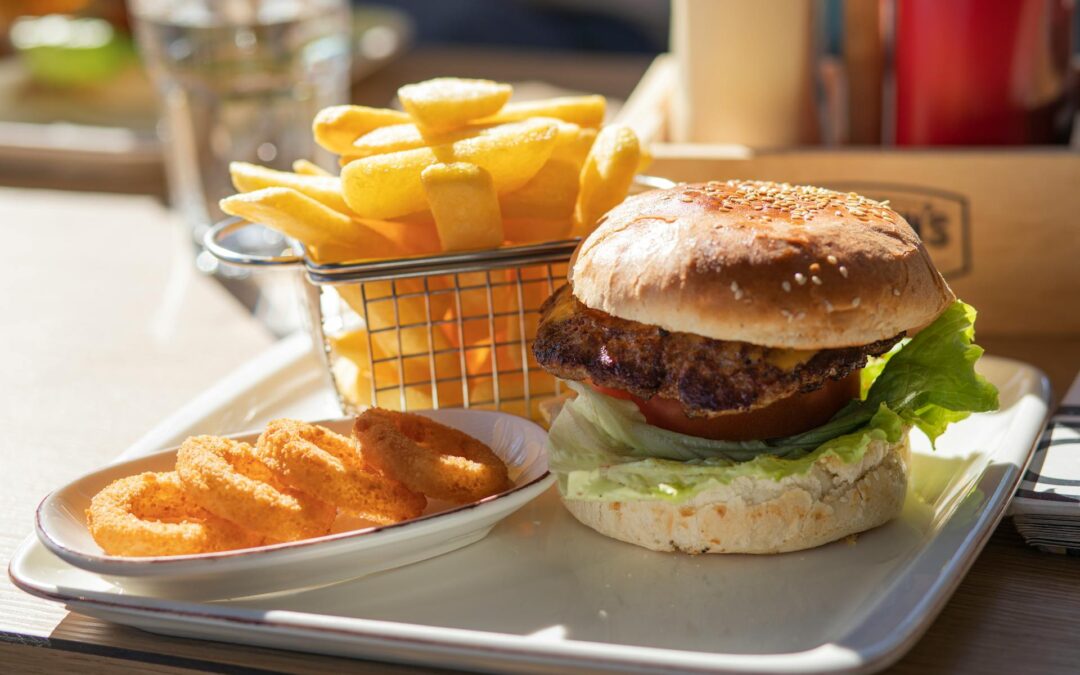If you’ve started a keto diet only to feel hit by a wave of exhaustion, headaches, or brain fog, you’re likely experiencing the dreaded keto flu. This temporary phase is your body’s response to switching from burning carbs to fat for fuel. But don’t worry—there are proven keto flu remedies to help you power through and get back to feeling your best. Let’s break down everything you need to know, from why it happens to actionable fixes you can try today.
What Is Keto Flu? (And Why Does It Happen?)
The keto flu isn’t an actual virus. Instead, it’s a cluster of symptoms caused by your body adapting to ketosis, a metabolic state where fat becomes your primary energy source. Common signs include: (1)
- Fatigue that makes even simple tasks feel exhausting
- Headaches, often resembling tension headaches
- Brain fog or trouble concentrating
- Muscle cramps or weakness
- Nausea or irritability
These symptoms typically arise within the first week of starting keto and stem from three key factors:
- Electrolyte imbalances: Sodium, potassium, and magnesium levels drop as your body flushes water weight.
- Dehydration: Rapid water loss occurs as glycogen (stored carbs) is depleted.
- Carb withdrawal: Cutting carbs suddenly can trigger sugar cravings and mood swings, similar to caffeine withdrawal.
The good news? You can minimize or even avoid keto flu with the right strategies.
10 Science-Backed Keto Flu Remedies
Experiencing keto flu can feel like hitting a wall, but these science-backed remedies are designed to tackle the root causes of your symptoms. Below, we dive deep into each solution, offering practical steps, expert tips, and the why behind their effectiveness. (2)
1. Replenish Electrolytes—The Foundation of Keto Flu Relief
Why It Works:
When you cut carbs, your body flushes water weight, taking essential electrolytes like sodium, potassium, and magnesium. Low levels trigger fatigue, cramps, and headaches. (3)
Action Steps:
- Sodium: Aim for 5–7 grams daily (yes, that’s more than usual!).
- Drink 1–2 cups of bone broth daily (1 cup = ~500mg sodium).
- Add a pinch of Himalayan salt to meals or water.
- Potassium: Target 3,500–4,700mg daily.
- Top sources: Avocado (1,000mg per cup), spinach (840mg per cooked cup), and salmon (650mg per 6 oz).
- Magnesium: 400mg daily of magnesium glycinate (gentle on the stomach) or apply topical magnesium oil to muscles.
Pro Tip: Avoid drinking excessive plain water without electrolytes—it dilutes sodium levels, worsening symptoms.
2. Hydrate Strategically—Beyond Just Water
Why It Works:
Dehydration exacerbates headaches and fatigue. On keto, you lose water faster due to reduced insulin levels, which normally help retain sodium. (4)
Action Steps:
- Drink 3–4 liters of fluids daily, including:
- Electrolyte-infused water (add lemon + ¼ tsp salt).
- Herbal teas like ginger (settles nausea) or chamomile (reduces stress).
- Limit caffeine, which can dehydrate further.
Science Note: A 2019 study on Nutrients found proper hydration improves cognitive function during ketosis.
3. Prioritize Healthy Fats—Fuel Your Transition
Why It Works:
Fats provide sustained energy and help your body adapt to burning ketones. Medium-chain triglycerides (MCTs) are especially effective, as they’re rapidly converted into ketones.
Action Steps:
- MCT Oil: Start with 1 tsp daily in coffee or smoothies to boost ketone levels.
- Avocado and Olive Oil: Add to salads or roasted veggies.
- Fatty Fish: Salmon and sardines provide omega-3s, reducing inflammation linked to brain fog.
Common Mistake: Skipping fats to “save calories” slows ketosis and worsens fatigue.
4. Magnesium Supplements—The Sleep and Cramp Fix
Why It Works:
Magnesium regulates muscle function and GABA production (a calming neurotransmitter). Deficiency is common on keto due to diuretic effects.
Action Steps:
- Before Bed: Take 200–400mg of magnesium glycinate to improve sleep quality.
- For Muscle Cramps: Apply magnesium spray topically to tight areas.
Avoid: Magnesium oxide, which has poor absorption and may cause diarrhea.
5. Potassium-Rich Foods—Beat Fatigue and Brain Fog
Why It Works:
Potassium supports nerve function and fluid balance. Low levels cause weakness and mental sluggishness.
Action Steps:
- Daily Goals: 4,700mg (women) or 5,100mg (men).
- Easy Swaps:
- Snack on ½ avocado (500mg) instead of nuts.
- Add spinach to omelets or smoothies.
Pro Tip: Cooking spinach boosts its bioavailability—1 cup cooked has triple the potassium of raw!
6. Optimize Sleep—Repair and Recharge
Why It Works:
Poor sleep raises cortisol, worsening keto flu symptoms. Deep sleep enhances ketone production.
Action Steps:
- Wind-Down Routine:
- Use blue-light blocking glasses after sunset.
- Take a warm bath with Epsom salts (magnesium sulfate).
- Sleep Environment: Keep your room at 65–68°F for optimal rest.
Science Note: A 2020 study in Sleep Medicine linked 7–9 hours of sleep to faster keto adaptation.
7. Gentle Movement—Boost Energy Without Burnout
Why It Works:
Light exercise increases blood flow to the brain and muscles, easing brain fog and cramps.
Action Steps:
- Daily Routine:
- 10–15 minutes of yoga (try the “legs up the wall” pose for circulation).
- A brisk walk in nature for sunlight (vitamin D boosts mood).
Avoid: HIIT or heavy lifting until energy stabilizes (1–2 weeks).
8. Adaptogens—Balance Stress Hormones
Why It Works:
Adaptogens like ashwagandha lower cortisol, helping your body manage the stress of carb withdrawal. (5)
Action Steps:
- Ashwagandha: 300–500mg daily to reduce anxiety and fatigue.
- Rhodiola Rosea: 200–400mg in the morning for mental clarity.
Pro Tip: Look for standardized extracts (KSM-66 or Sensoril) for guaranteed potency.
9. Gradual Carb Reduction—Ease the Transition
Why It Works:
Dropping carbs too quickly shocks your system. A phased approach minimizes withdrawal symptoms.
Action Steps:
- Week 1: Cut carbs to 50g daily (focus on veggies, not bread).
- Week 2: Drop to 30g, replacing grains with cauliflower rice or zucchini noodles.
Sample Meal:
- Breakfast: Scrambled eggs with spinach and avocado.
- Lunch: Grilled chicken over mixed greens + olive oil dressing.
- Dinner: Salmon with roasted Brussels sprouts.
10. Avoid Overtraining—Protect Your Energy Reserves
Why It Works:
Intense workouts spike cortisol, which can stall ketosis and amplify fatigue.
Action Steps:
- Signs You’re Overdoing It: Lingering soreness, irritability, or insomnia.
- Swap For: Pilates, swimming, or tai chi until energy rebounds.
How to Prevent Keto Flu Before It Starts
Starting a keto diet doesn’t have to mean battling fatigue, headaches, or brain fog. With the right preparation, you can prevent keto flu altogether—or drastically reduce its severity. Below, we break down science-backed strategies to help you transition into ketosis smoothly, avoid common pitfalls, and set yourself up for long-term success.
Why Prevention Matters
The keto flu is largely a result of sudden changes in your body’s fuel source and electrolyte balance. By addressing these shifts before they trigger symptoms, you’ll:
- Skip the misery of headaches, cramps, and fatigue.
- Accelerate ketosis by supporting your body’s adaptation.
- Stay consistent with your diet instead of quitting early.
Let’s dive into actionable steps to prevent keto flu before day one.
Pre-Load Electrolytes (3–5 Days Before Starting Keto)
Why It Works:
Electrolyte depletion is the primary cause of keto flu. By boosting sodium, potassium, and magnesium in advance, you’ll buffer against early losses.
Action Steps:
- Sodium: Add ½ tsp of Himalayan salt to meals or water twice daily (≈2,300mg sodium).
- Potassium: Eat 1–2 avocados daily (≈1,000mg potassium each) or 2 cups of spinach (≈1,600mg).
- Magnesium: Take 200–400mg of magnesium glycinate nightly to prep muscles and nerves.
Pro Tip: Use an electrolyte supplement like LMNT or Keto K1000 for balanced ratios without guesswork.
Gradually Reduce Carbs (Not Cold Turkey)
Why It Works:
A sudden drop in carbs shocks your system, spiking cortisol and triggering withdrawal symptoms like irritability and cravings.
Action Plan:
- Phase 1 (Days 1–3): Cut carbs to 100g/day, focusing on veggies (broccoli, zucchini) and ditching processed sugars.
- Phase 2 (Days 4–6): Drop to 50g/day, replacing grains with cauliflower rice or shirataki noodles.
- Phase 3 (Day 7): Begin keto at 20–30g net carbs daily.
Sample Meal Transition:
- Breakfast: Swap oatmeal for scrambled eggs with avocado.
- Lunch: Replace sandwiches with grilled chicken over leafy greens.
- Dinner: Trade pasta for zucchini noodles with meatballs.
Hydrate Strategically (Before and During Keto)
Why It Works:
Glycogen (stored carbs) holds water, so carb reduction causes rapid fluid loss. Pre-hydration offsets dehydration risks.
Action Steps:
- Pre-Keto: Drink 3 liters of water daily with electrolytes.
- During Keto: Sip 1–2 cups of bone broth daily (rich in sodium) and add lemon + salt to water.
Avoid: Excessive plain water, which dilutes electrolytes.
Meal Prep Balanced Keto Meals
Why It Works:
Planning meals ensure you’re eating enough fat and protein while avoiding hidden carbs that disrupt ketosis.
Prep Checklist:
- Fats: Pre-cooked bacon, roast veggies in olive oil, portion MCT oil.
- Proteins: Batch-grill chicken thighs, hard-boiled eggs, or baked salmon.
- Low-Carb Veggies: Chop cauliflower, spinach, and asparagus for quick sides.
Pro Tip: Use a macro tracker like Cronometer to ensure 70–80% of calories come from fat.
Boost Magnesium and Potassium Early
Why It Works:
These electrolytes are often overlooked in standard diets but are critical for preventing cramps and fatigue.
Food Sources:
- Magnesium: Pumpkin seeds (150mg/oz), dark chocolate (64mg/square).
- Potassium: Mushrooms (300mg/cup), salmon (650mg/6 oz).
Supplementation:
- Take magnesium glycinate before bed.
- Use a potassium chloride salt substitute (e.g., NoSalt) in meals.
Optimize Sleep and Stress Management
Why It Works:
Poor sleep and high stress raise cortisol, worsening keto flu symptoms.
Pre-Keto Routine:
- Sleep: Aim for 7–9 hours nightly. Use blackout curtains and a cool room (65–68°F).
- Stress: Practice 10 minutes of meditation or deep breathing daily.
Science Note: A 2021 study in Frontiers in Nutrition linked adequate sleep to faster keto adaptation.
Start MCT Oil Early
Why It Works:
MCTs (medium-chain triglycerides) are quickly converted to ketones, giving your brain an energy source while your body adapts.
How to Use:
- Begin with 1 tsp daily in coffee or smoothies 3 days before keto.
- Gradually increase to 1 tbsp to avoid digestive upset.
Avoid Overtraining Pre-Keto
Why It Works:
Intense exercise depletes glycogen faster, accelerating fluid/electrolyte loss.
Adjustments:
- Pre-Keto Week: Swap HIIT for yoga, walking, or light strength training.
- Post-Keto: Resume intense workouts after 1–2 weeks.
Educate Yourself on Hidden Carbs
Why It Works:
Unexpected carbs (e.g., in sauces or dressings) can kick you out of ketosis, prolonging adaptation.
Common Culprits to Avoid:
- Ketchup (4g carbs/tbsp)
- BBQ sauce (10g carbs/tbsp)
- Milk (12g carbs/cup)
Swap For:
- Mustard (0g carbs)
- Ranch dressing (2g carbs/tbsp)
- Unsweetened almond milk (1g carbs/cup)
Test Ketone Levels Early
Why It Works:
Confirming ketosis ensures your efforts are working and helps troubleshoot lingering symptoms.
Methods:
- Urine Strips: Cheap but less accurate after initial adaptation.
- Blood Meter: Most reliable (aim for 0.5–3.0 mmol/L).
Keto Flu FAQs
How Long Does Keto Flu Last?
Most people feel better within 3–7 days. If symptoms drag on, double-check your electrolyte intake or consult a healthcare provider.
Can Keto Flu Cause Vomiting?
Severe nausea is possible, but vomiting is rare. Sip ginger tea or bone broth to calm your stomach.
Does Keto Flu Mean I’m in Ketosis?
Not necessarily—it’s a sign your body is adapting, but use ketone test strips to confirm ketosis.
What’s the Fastest Way to Fix Keto Flu?
Focus on electrolytes, hydration, and rest. Many feel relief within 24 hours of balancing sodium and potassium.
When to See a Doctor
While keto flu is usually harmless, consult a professional if you experience:
- Severe or persistent vomiting
- Heart palpitations
- Confusion or dizziness that doesn’t improve with hydration
The Bottom Line
The keto flu is a temporary hurdle, but with these remedies, you’ll navigate it like a pro. Remember: This phase is your body’s way of adapting to a more efficient fuel source. Once you’re through it, many people enjoy benefits like steady energy, mental clarity, and fewer cravings.
Ready to tackle keto flu head-on? Pick 2–3 strategies from this list, stay consistent, and trust the process. You’ve got this!







0 Comments